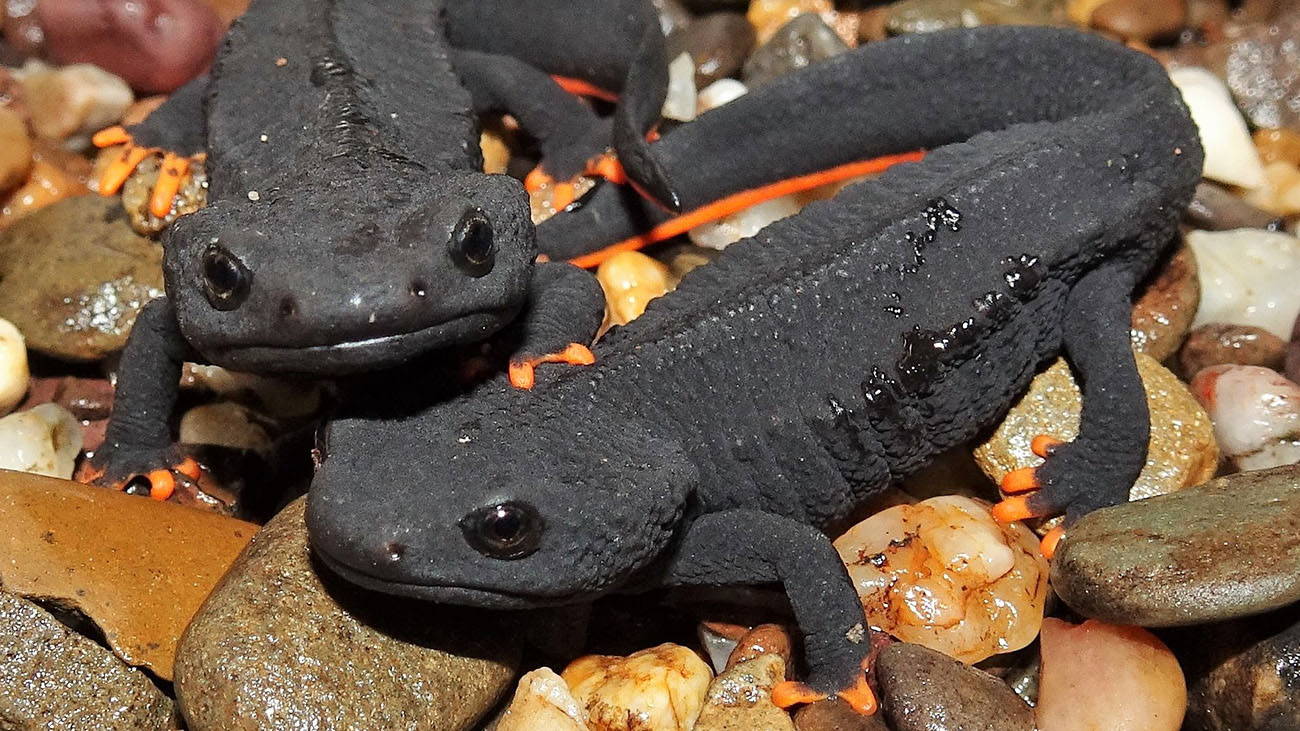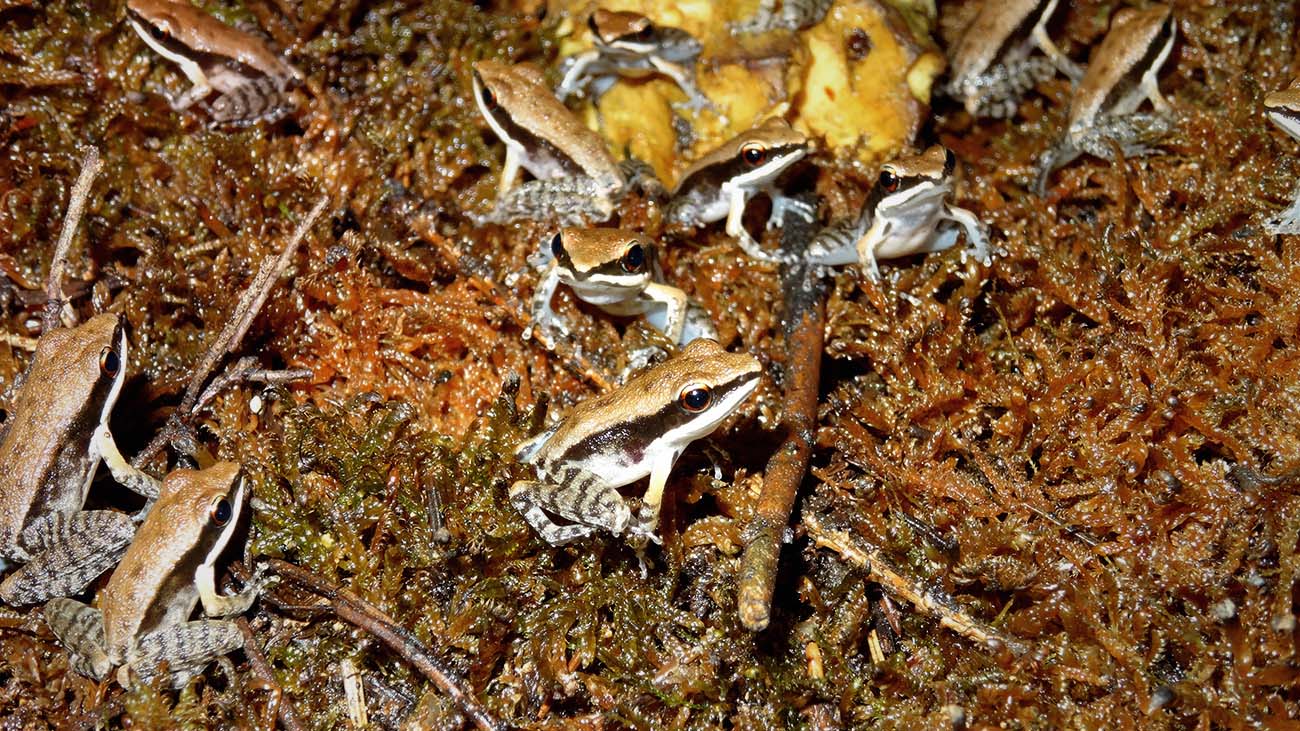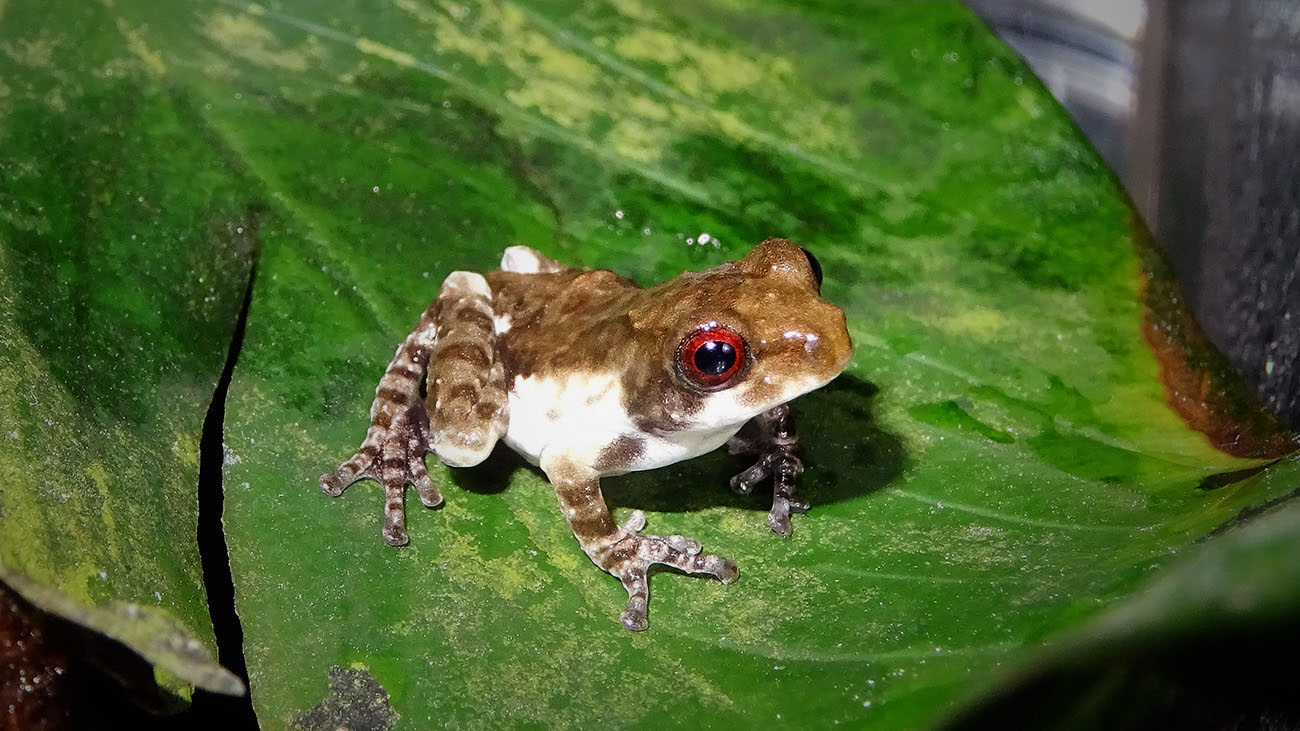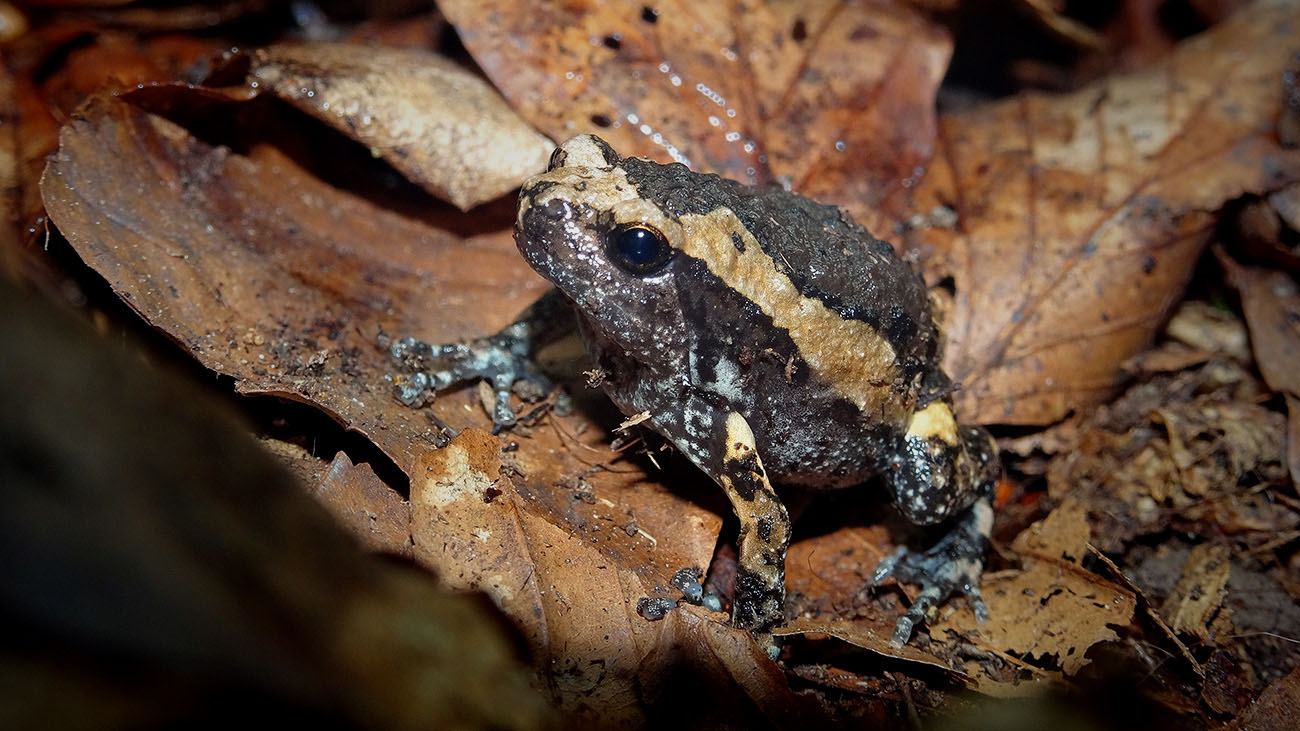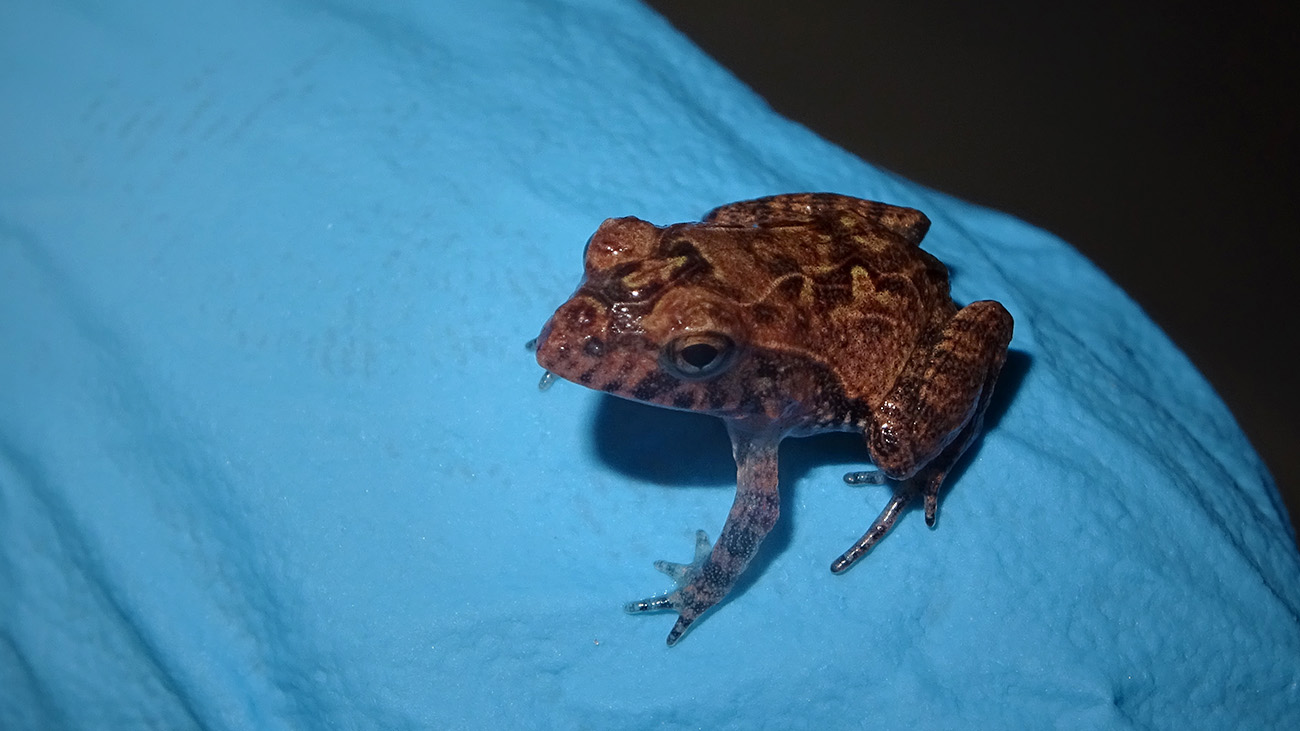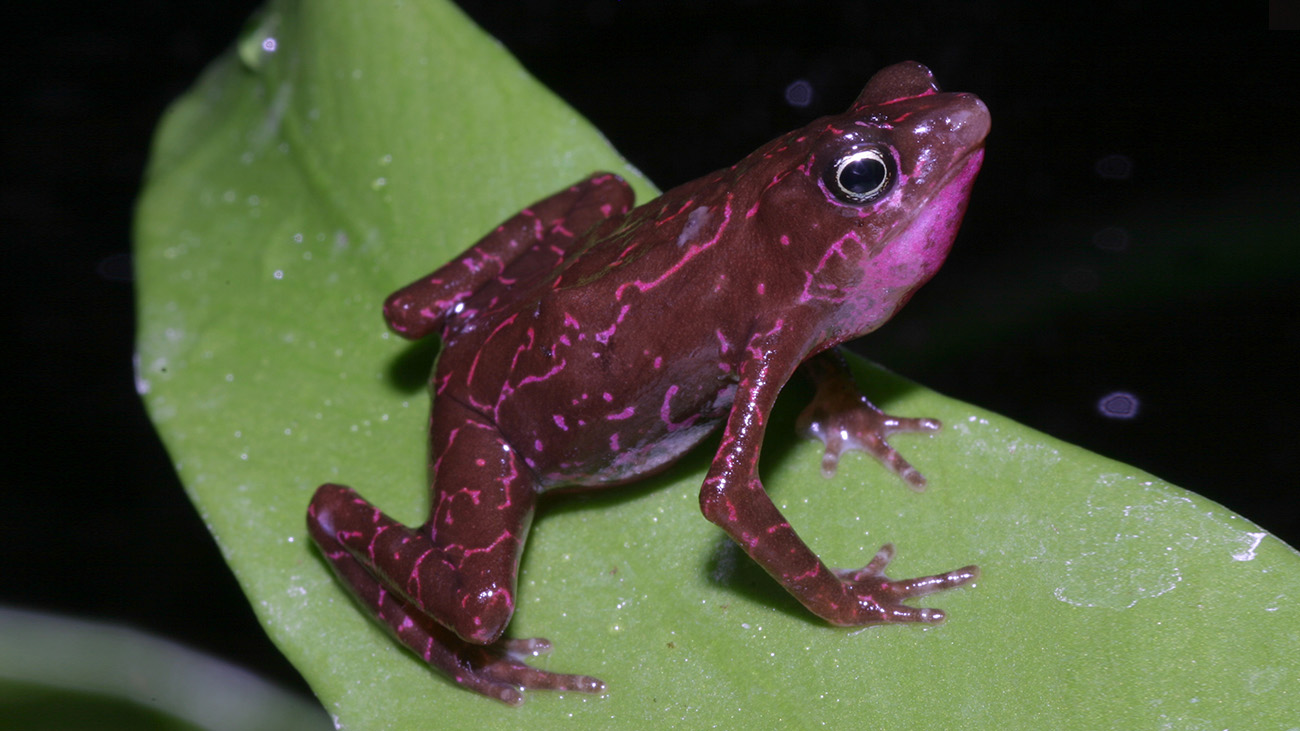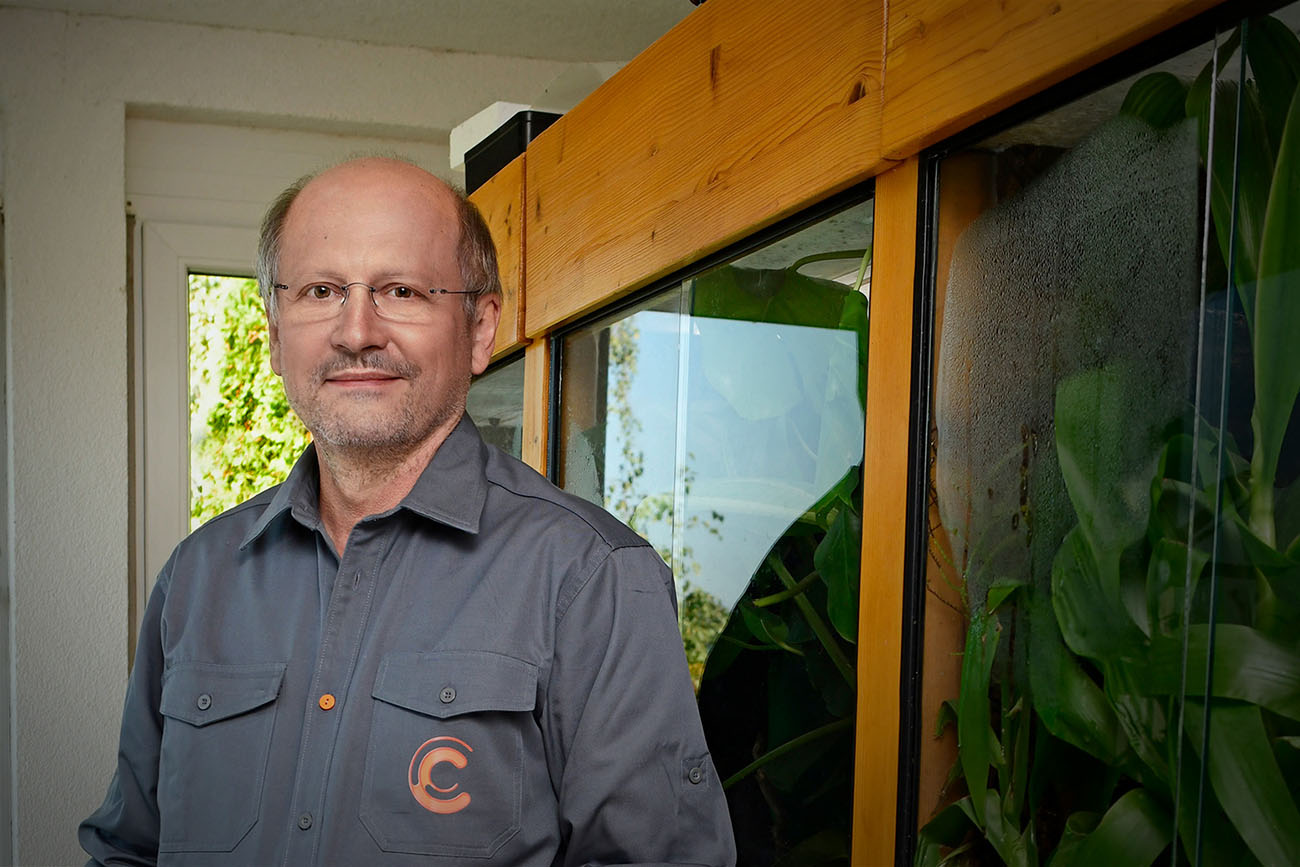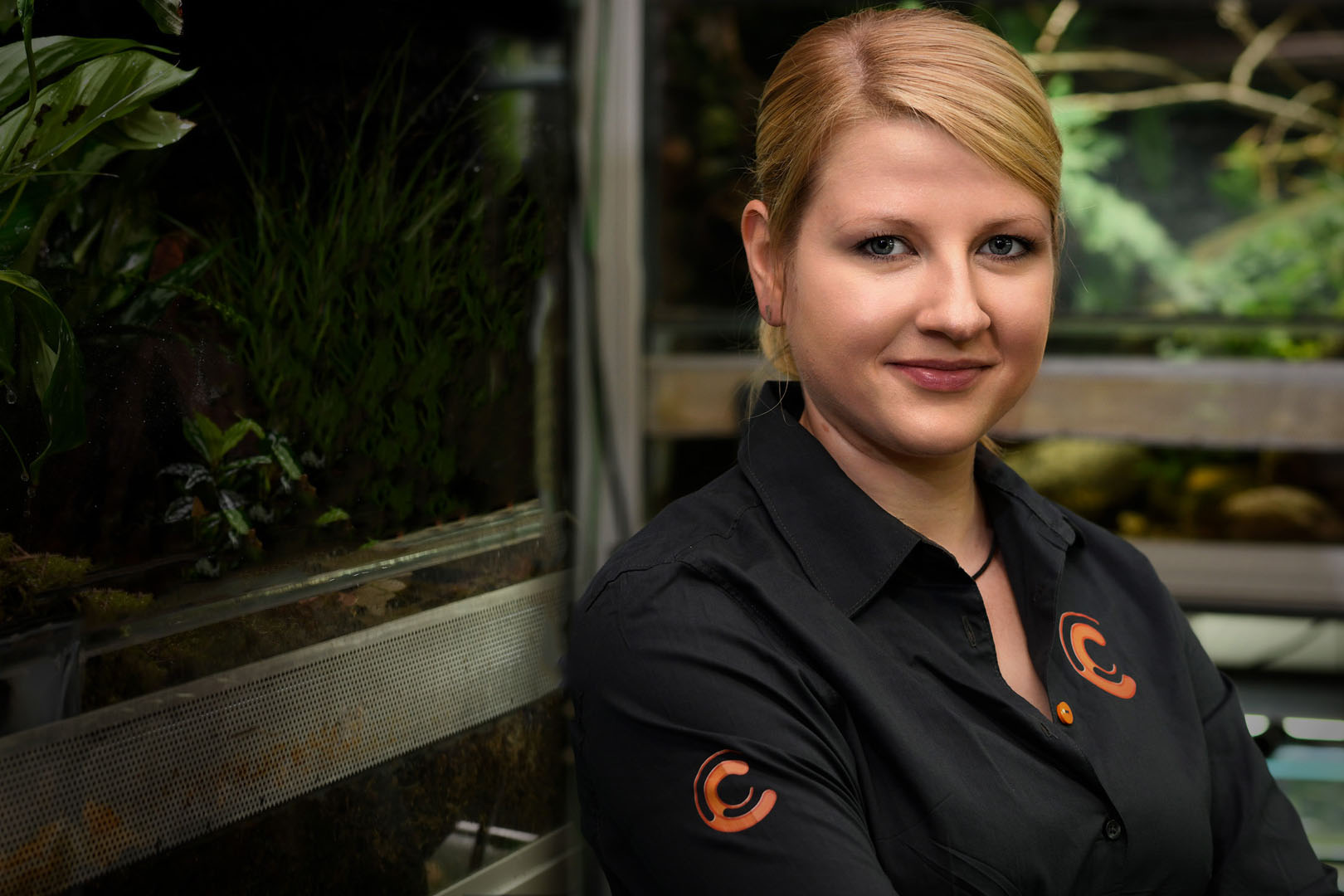
On the road in Cologne and Vietnam
Tropical heat, the steaming rainforest, uncounted species — while some scientists stay busy trying to catalog and describe all the amphibian species in Vietnam, their colleagues have their hands full trying to save them from extinction. Anna Rauhaus from the Cologne Zoo is one of them. With her skills as a zoo keeper, she helps her Vietnamese colleagues develop breeding spaces for endangered species, research their reproduction, and form breeding groups on site.
On a rainforest mission
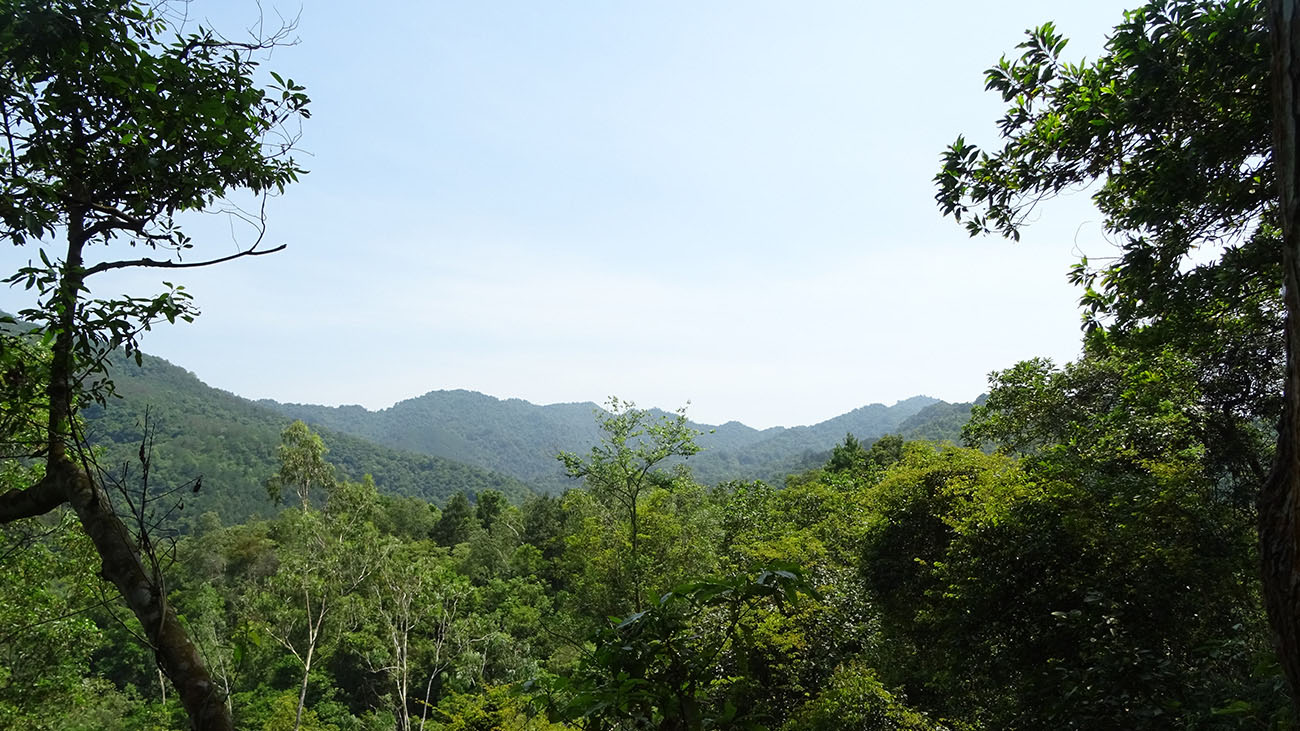
The rainforests in northern Vietnam are a hotspot for biodiversity. They are home to the research and breeding station Me Linh. | Thomas Ziegler
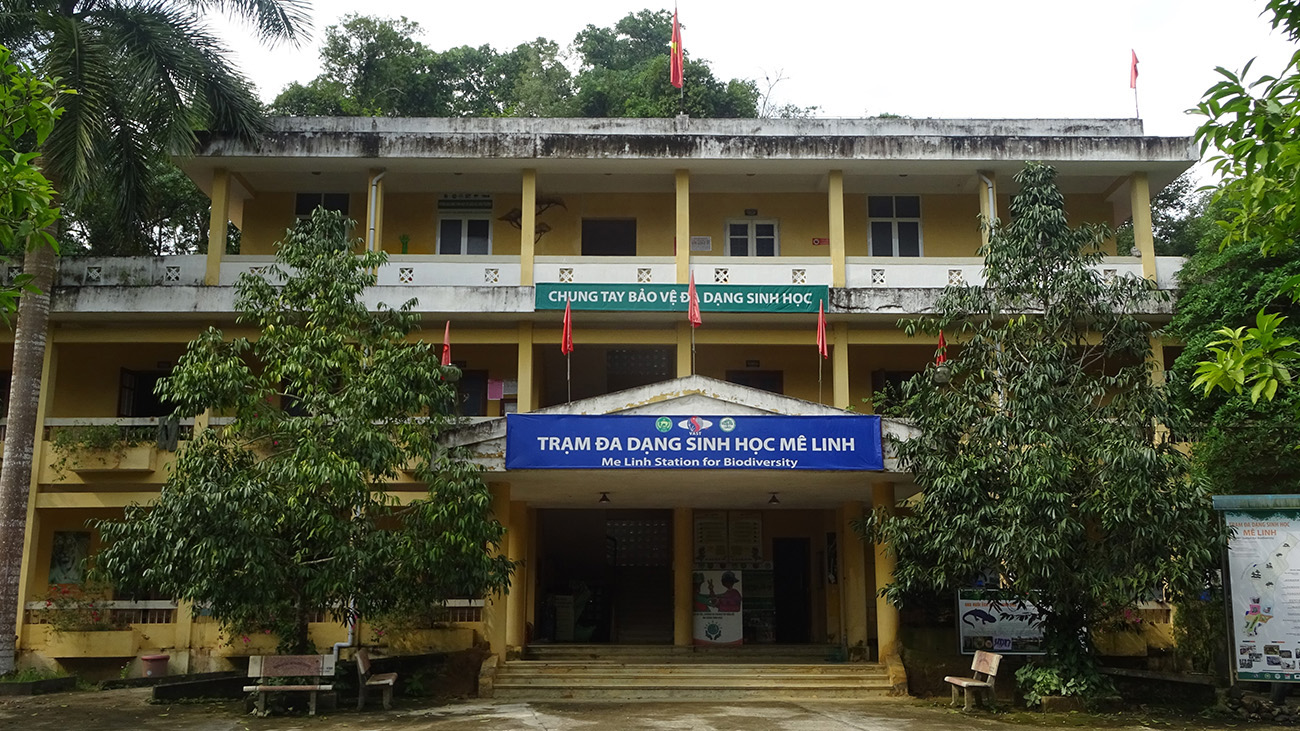
The entrance to the “Me Linh Station for Biodiversity” in northern Vietnam. It is run by the Institute for Ecology and Biological Resources (IEBR) in Hanoi. The Cologne Zoo supports the station with staff and financing. | Thomas Ziegler
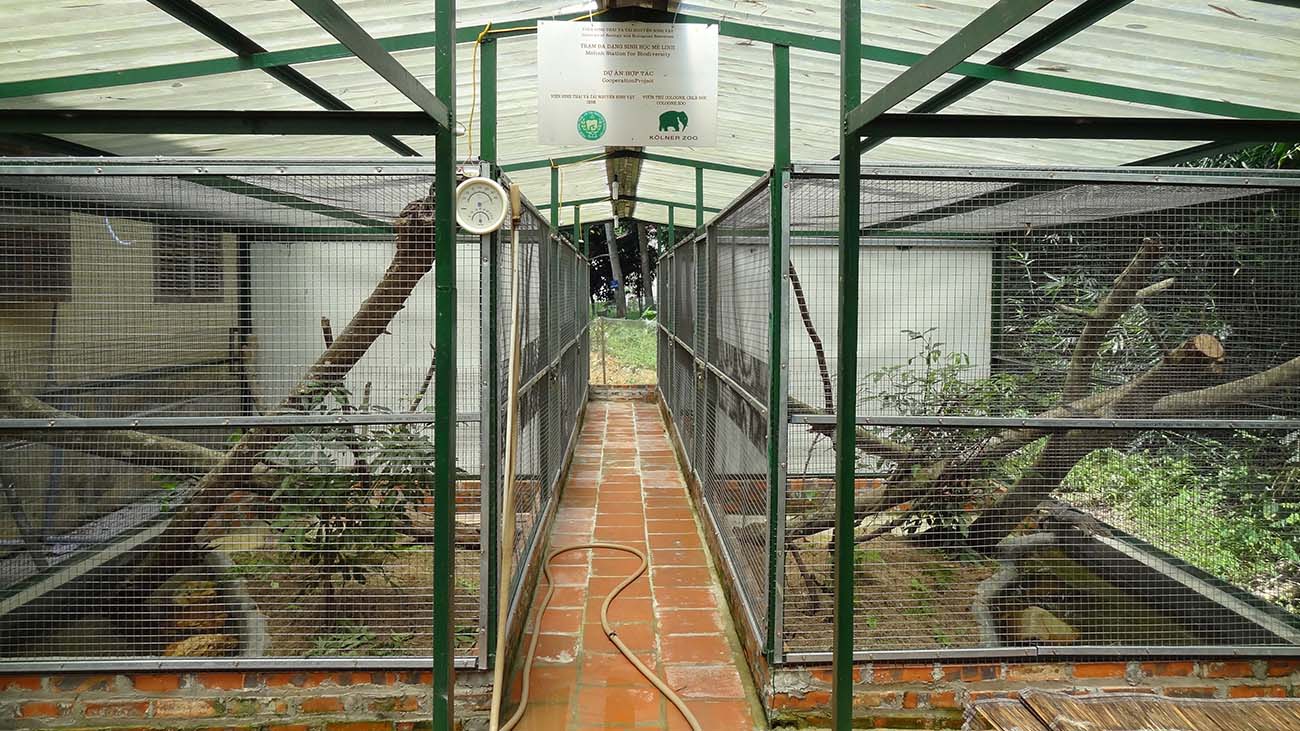
Among other things, the Me Linh Station serves as a sanctuary for confiscated or injured animals, which are nursed back to health and prepared for possible reintroduction into the wild. Monitor lizards are frequent visitors in the station. Here, they can be cared for appropriately. | Thomas Ziegler
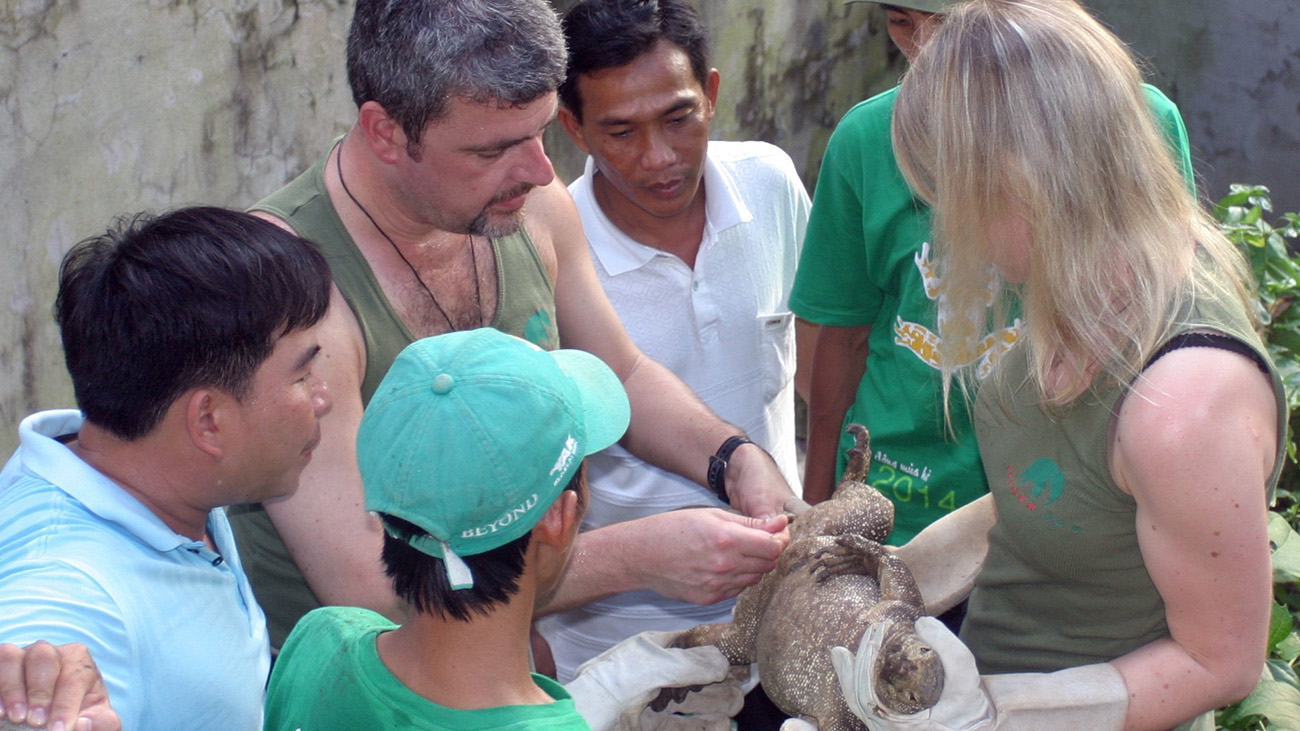
Anna Rauhaus helps identify the sex of a stately monitor lizard at the station. The big lizards are illegally hunted for their leather and meat. | Truong Quang Nguyen
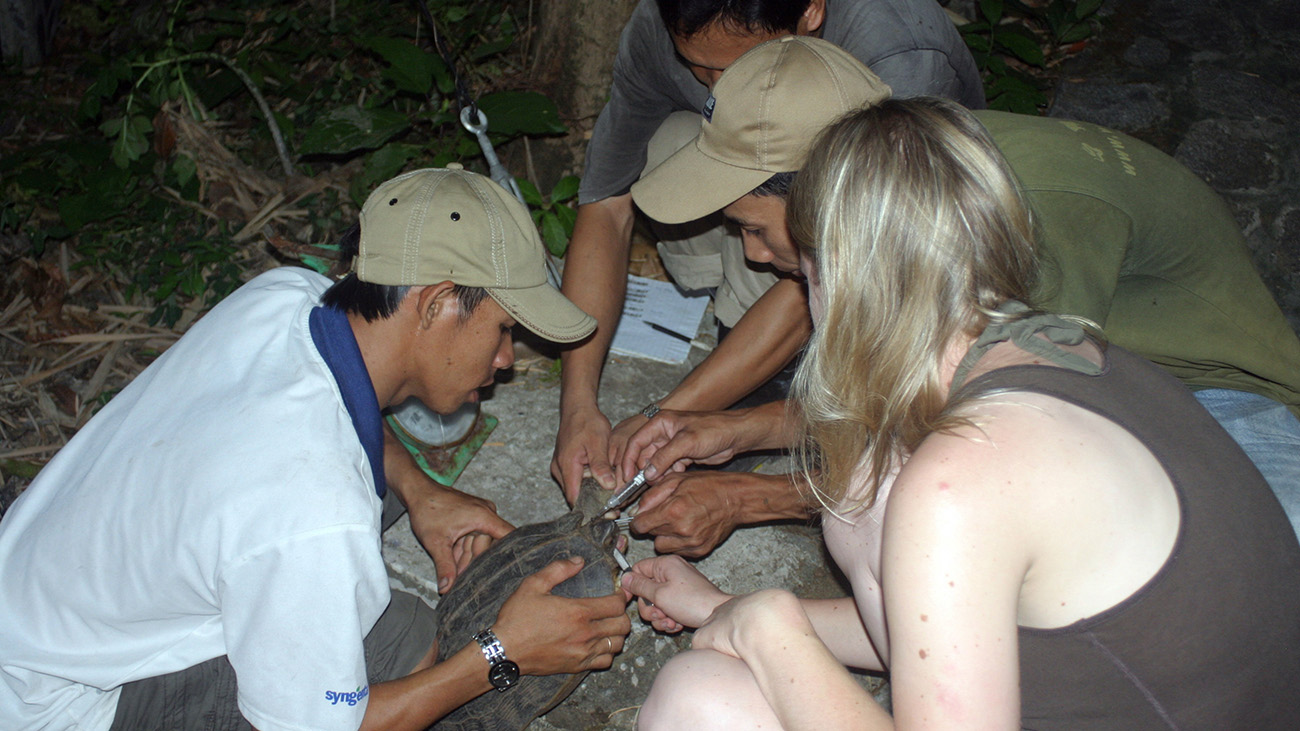
Turtles are hunted especially often because they are eaten as well as used in traditional Chinese medicine. Animals cared for at the station are marked with a transponder so researchers can recognize them if they cross paths again. | Thomas Ziegler
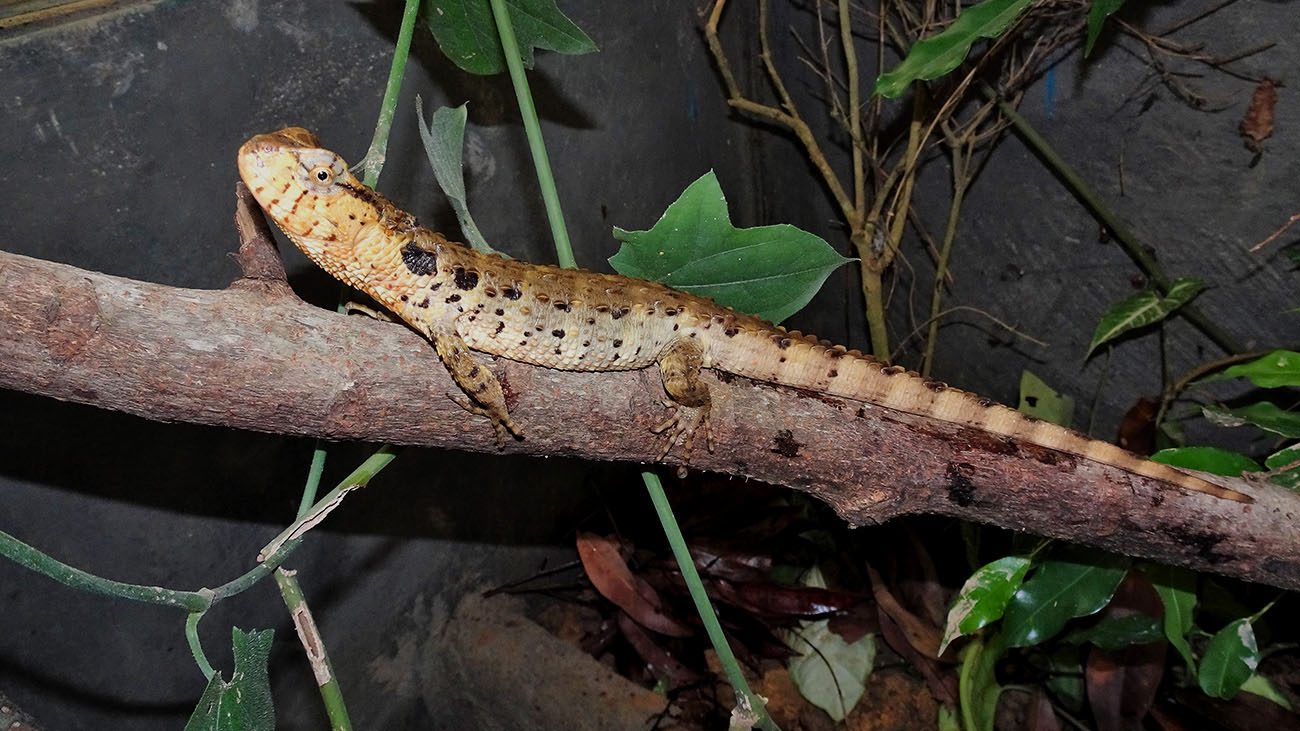
Several critically endangered species are bred in the Me Linh Station. The Chinese Crocodile Lizard is on the verge of extinction. Anna Rauhaus cares for the animals in the Cologne Zoo and has shared her knowledge with her colleagues in Vietnam, who have now also set up a breeding program. | Anna Rauhau

But Anna is also actively involved in research in Vietnam. Here, is recording environmental data in the habitat of the Chinese Water Dragon near the Me Linh Station. | Thomas Ziegler
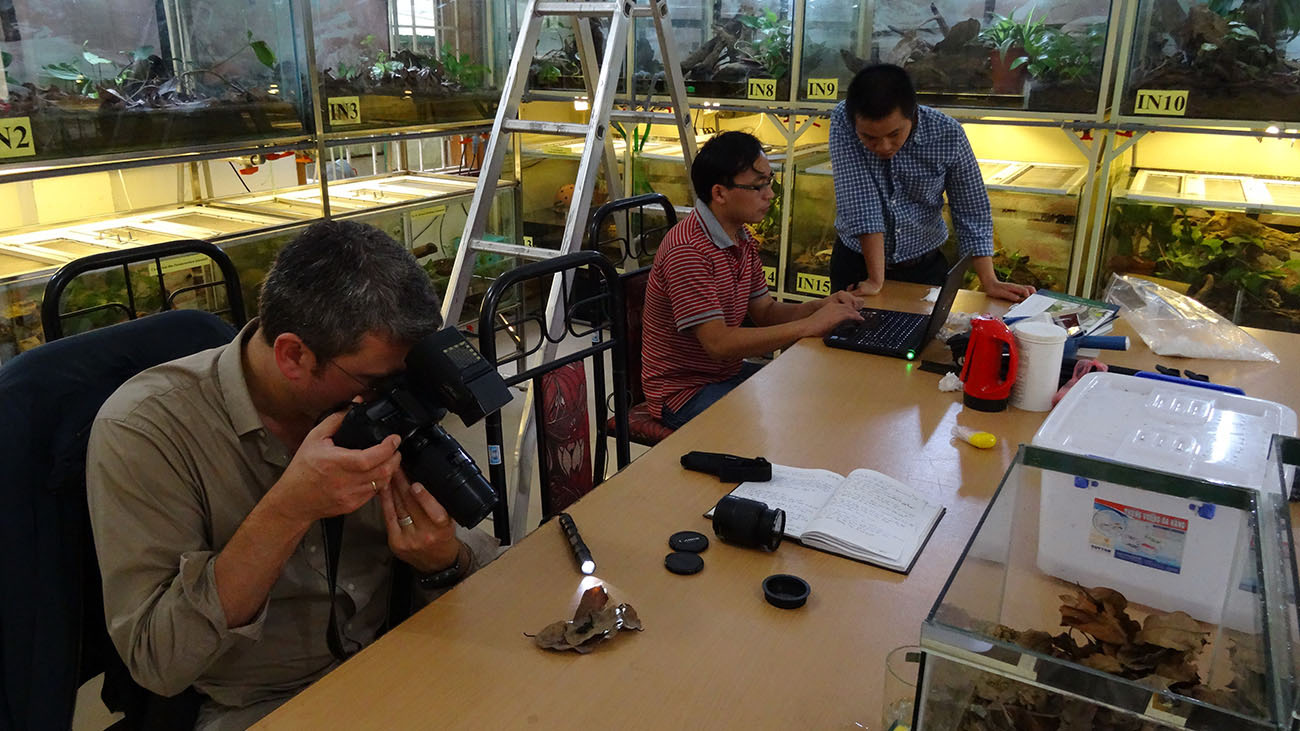
Amphibians have their own space in the station. It serves as both a base for research projects and a breeding station for endangered species. | Thomas Ziegler

In addition, amphibians are kept in outdoor facilities – the climate is optimal on site. That allows researchers to collect biological data and breed animals for species conservation. | Anna Rauhaus
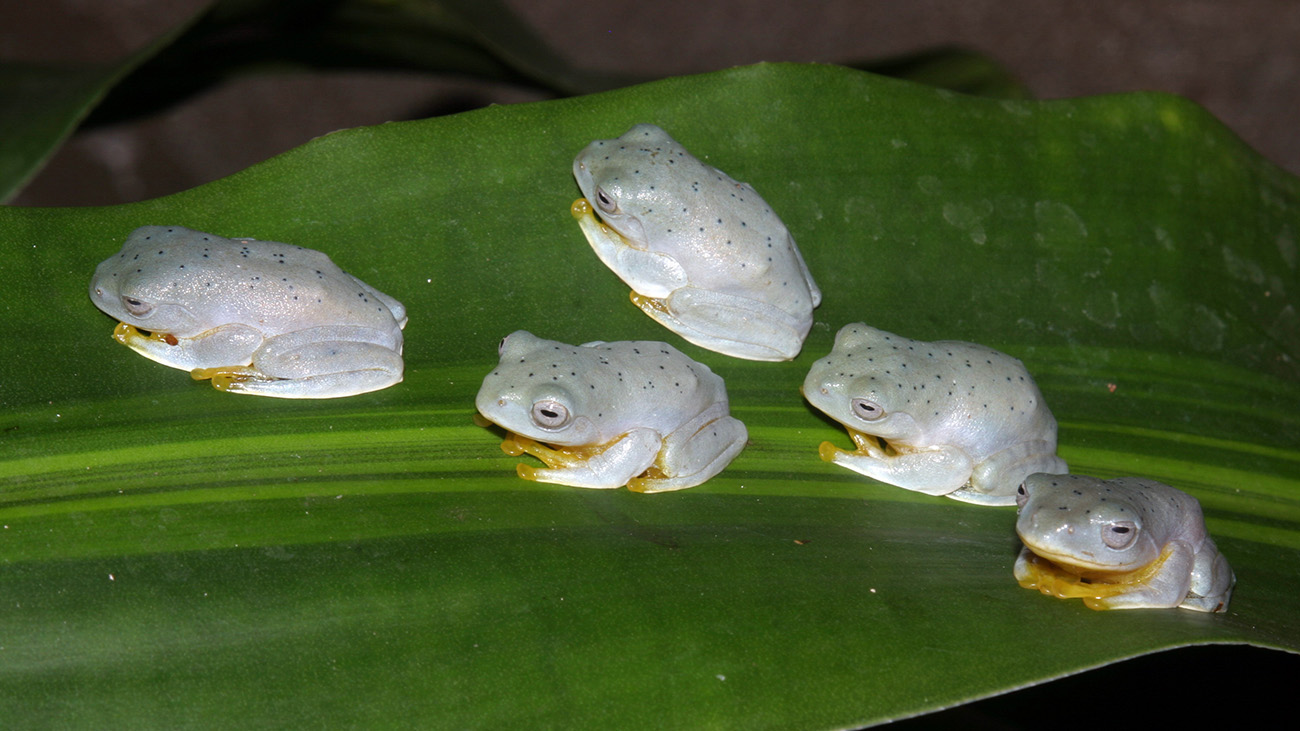
Just one of the many amphibian species that are being successfully bred thanks to Anna in Me Linh: the Black-Webbed Treefrog Rhacophorus kio. It is one of the flying frogs that can travel long distances between trees in gliding flight. | Thomas Ziegler
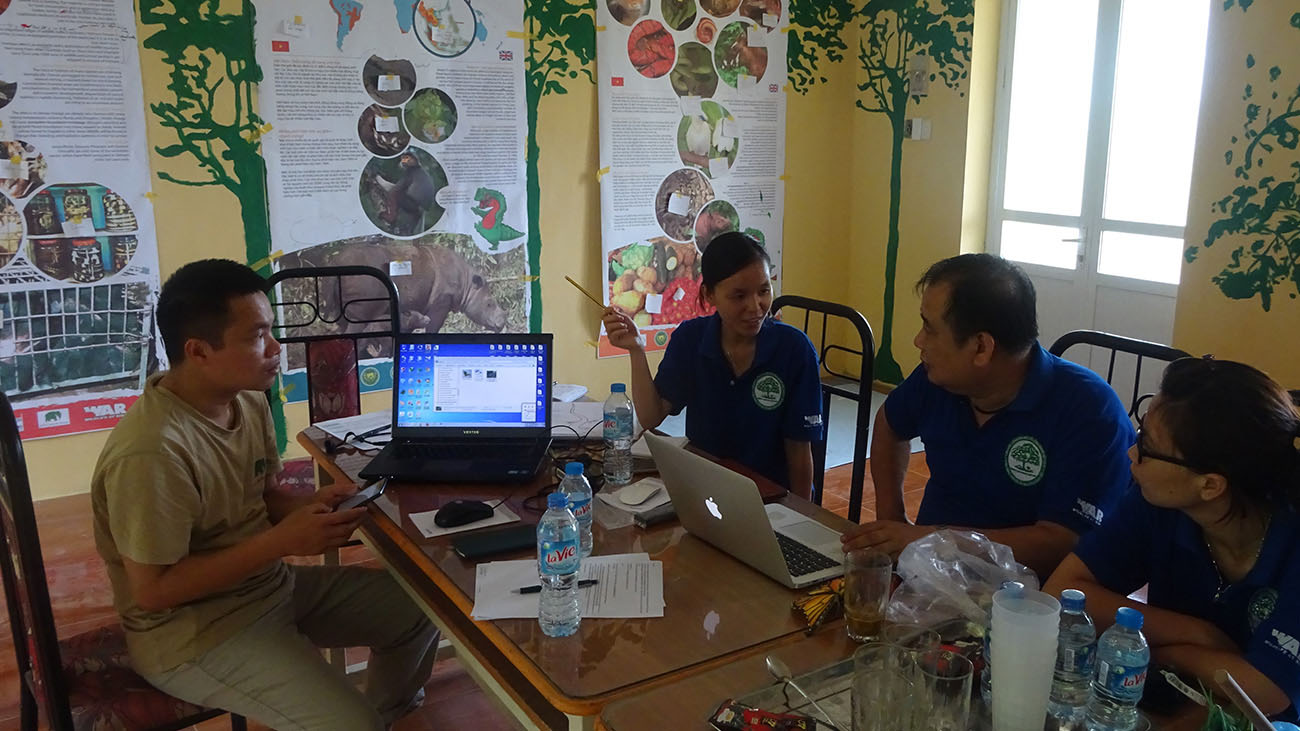
The station’s exhibits were developed in co-operation with experts from the Cologne Zoo. This co-operation helps raise awareness about the threat to local wildlife within the community. | Thomas Ziegler
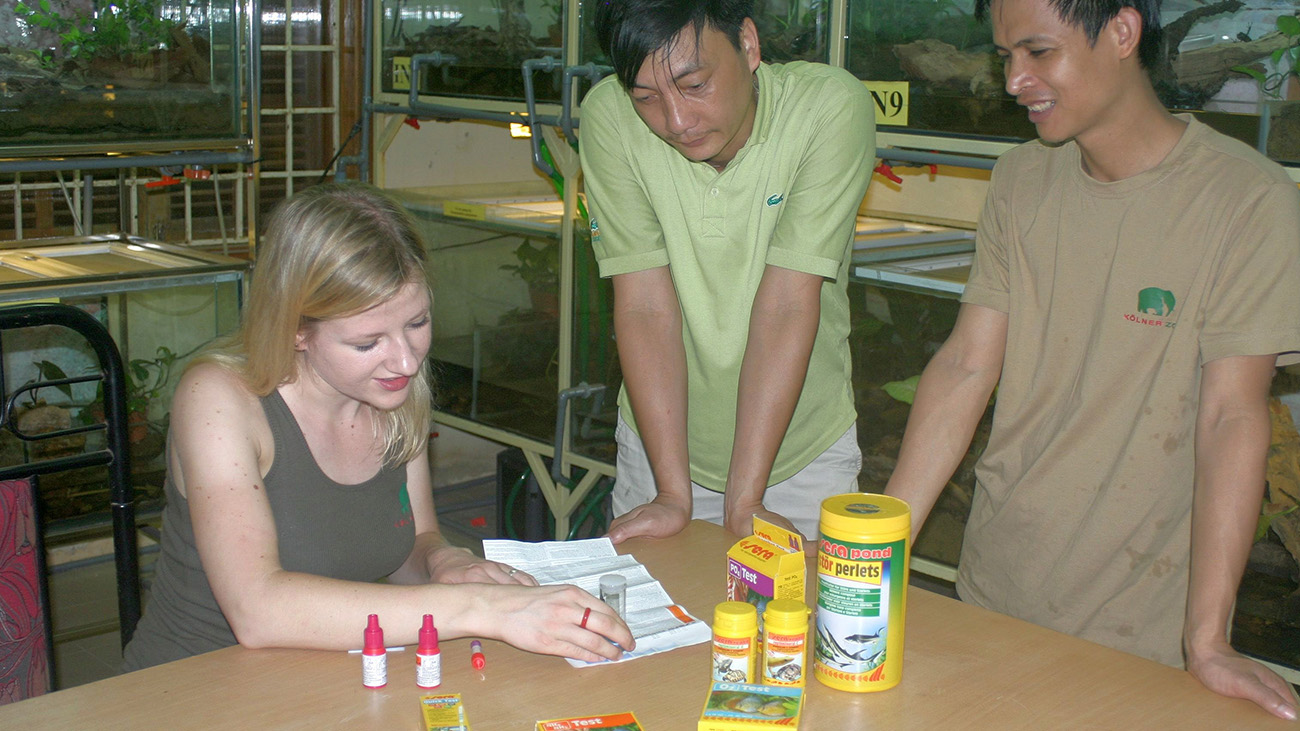
Research, animal protection and breeding, training and cooperation. In Vietnam, Anna can use her diverse interests to benefit animals and nature. It's her ultimate dream job. | Thomas Ziegler
Ambassadors in Cologne
Amphibians are also being bred at home in Cologne. There they are ambassadors for their natural habitat and a key reserve for species conservation. In the past few years, Anna and her team have managed to breed nearly 20 species of frogs, toads, and salamanders, including highly endangered species, in their special breeding room for amphibians. The terrarium team in Cologne is specialized in endangered and little-researched species. They also help host and find homes for confiscated animals.

A particularly charming toad
One of Anna’s favorites is the Bony-Headed Toad. In Vietnam it is endangered, but in Cologne it is reproducing quickly thanks to dedicated care. “Bony-Headed Toads are beautiful animals with a very special charm,” Anna says. “I am glad we have been helping them multiply over several generations in the Cologne Zoo.”
From passion to profession
How do you find a job like Anna’s? “I’ve always loved amphibians. Apart from the fact that they’re just very likeable, I’m fascinated by their sheer diversity.” So much so that after a few semesters at university, Anna decided to switch to something more practical that truly inspires her: animal caretaker with a focus on species conservation. She has been a caretaker in the Cologne Zoo’s terrariums since 2014. “No two days are the same,” says Anna about her dream job. “Especially with the amphibians, you have to look at their perspective and consider how to best mimic their natural living conditions. In the Cologne Zoo, it is especially nice that the breeding is combined with research and species conservation.”


